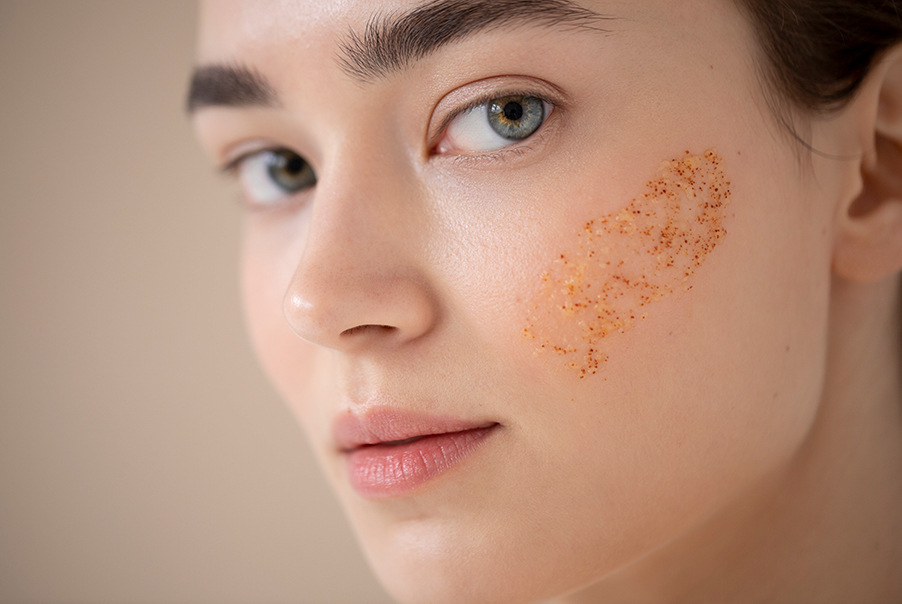Melasma is a common skin condition that affects millions of people, often causing significant cosmetic concerns. It appears as dark, irregular patches on the skin, most frequently on the face. While melasma is not harmful to your health, it can affect your confidence, making people seek effective ways to treat and prevent it. Understanding what melasma is, how to identify it, and the various treatment and prevention strategies can help you manage this condition with confidence. This article will explore the causes, symptoms, and most effective treatment options for melasma, as well as tips for prevention.
What is Melasma?
Melasma is a form of hyperpigmentation, a condition in which certain areas of the skin develop excess melanin, the pigment responsible for skin color. The condition typically manifests as brown or gray-brown patches on the skin. These patches often appear on the face, particularly on the cheeks, forehead, nose, and upper lip. In some cases, melasma can also appear on the neck or forearms.
While men can also get melasma, women are more likely to get it, especially those in their 20s to 40s. It tends to be more prevalent in individuals with darker skin tones, such as those of Hispanic, Asian, or African descent. While the condition is generally not dangerous, it can be distressing for those affected due to its visible nature.
Causes of Melasma
Although its precise causation is unknown, melasma is thought to be caused by a confluence of environmental and genetic variables. Some of the primary causes include:
- Hormonal Changes: Melasma is significantly triggered by changes in hormones. Pregnancy (often referred to as the “mask of pregnancy”), birth control pills, and hormone replacement therapy (HRT) can all cause hormonal shifts that stimulate melanin production, leading to melasma.
- Sun Exposure: Exposure to ultraviolet (UV) rays is one of the most well-documented causes of melasma. UV radiation triggers the skin’s melanocytes (cells that produce melanin) to increase melanin production as a protective mechanism. Over time, this can lead to the development of dark patches, especially in individuals with a predisposition to melasma.
- Genetics: Melasma is more likely to occur if there is a family tradition of the disorder. If one or both parents had melasma, their children may be at a higher risk of developing it as well.
- Certain Medications: Some medications, such as oral contraceptives and some types of antibiotics, can trigger melasma in individuals who are already predisposed. Additionally, certain skincare products that increase sensitivity to sunlight can contribute to the condition.
How to Identify Melasma
Melasma usually presents itself as well-defined, symmetrical patches of darkened skin, typically on the face. These patches may range from light brown to dark brown or even grayish, and they often have irregular edges. The following are the most typical locations for melasma:
- Cheeks: The most common location for melasma patches.
- Forehead: Another frequent spot for dark patches.
- Nose: The nose bridge or the area around it.
- Upper Lip: Melasma often appears as a “mustache-like” patch on the upper lip, which is common in women.
- Chin and Jawline: These areas can also be affected.
Unlike age spots or sun spots, which typically develop in isolated areas due to sun exposure, melasma tends to appear as larger, more diffuse patches. The pigmentation may darken over time and fluctuate with seasonal changes, especially when exposed to the sun.
Treatment Options for Melasma
While melasma does not pose a health risk, many people seek treatment to reduce the appearance of the dark patches. Fortunately, there are several effective treatment options available for melasma, depending on its severity and underlying causes.
1. Topical Treatments
Several topical treatments can help lighten melasma patches over time. These treatments typically include:
- Hydroquinone: This is the most common skin-lightening agent used to treat melasma. It works by inhibiting the production of melanin. Hydroquinone is available in both over-the-counter and prescription formulations, with stronger concentrations typically prescribed for more stubborn cases.
- Retinoids (Tretinoin): Retinoids, such as tretinoin, help by speeding up skin cell turnover, which can assist in fading melasma over time. They also make the skin more sensitive to the sun, so it is important to use sunscreen daily when using retinoids.
- Corticosteroids: In combination with other treatments, corticosteroids can reduce inflammation and lighten pigmentation. These are typically used in conjunction with hydroquinone for more effective results.
- Azelaic Acid and Kojic Acid: These naturally occurring acids can also help lighten skin and reduce melanin production, making them effective for treating melasma.
- Vitamin C: Vitamin C is a potent antioxidant that can inhibit melanin production and brighten the skin. While it may not be as strong as hydroquinone, it is an excellent option for those looking for a milder treatment.
2. Chemical Peels
Chemical peels involve applying a solution to the skin to exfoliate the outer layers, removing pigmented skin cells and encouraging the growth of new, even-toned skin. Superficial chemical peels containing alpha hydroxy acids (AHAs) or salicylic acid can be effective for treating melasma by targeting the upper layers of the skin where pigmentation resides.
3. Laser Treatments
Laser treatments, such as fractional lasers and intense pulsed light (IPL), can help break down excess pigmentation in the skin. These treatments use targeted light energy to treat the underlying pigmentation while leaving the surrounding skin intact. However, laser treatments must be used with caution for melasma, as they can sometimes worsen pigmentation in darker skin tones if not properly managed.
4. Sun Protection
Sun protection is perhaps the most important factor in managing and preventing melasma. Since UV exposure is a major trigger for melasma, using a broad-spectrum sunscreen with an SPF of 30 or higher daily is essential. It’s also important to wear hats, sunglasses, and seek shade during peak sun hours to protect your skin from harmful UV rays. Additionally, avoid tanning beds and opt for a broad-spectrum sunscreen that protects against both UVA and UVB rays.
Prevention of Melasma
While it’s not always possible to prevent melasma, certain lifestyle changes and precautions can help reduce the risk of developing it or prevent existing patches from worsening.
- Consistent Sun Protection: Daily use of sunscreen with SPF 30 or higher, along with wearing protective clothing and avoiding direct sunlight, is the best way to prevent melasma from worsening. Even during cloudy days or when indoors, sunscreen should be applied as UV rays can penetrate windows.
- Avoid Hormonal Triggers: If melasma is linked to hormonal changes, such as pregnancy or birth control pills, discussing alternative options with a healthcare provider may help. Switching to a different birth control method or hormone therapy may reduce the risk of melasma flare-ups.
- Gentle Skincare: Avoid using products that can irritate or sensitize your skin further. Gentle cleansers, moisturizers, and exfoliants can help maintain healthy skin without aggravating melasma.
Managing Melasma: Key Takeaways for Healthy Skin
Melasma can be a frustrating condition to deal with, but with the right treatment and preventive measures, its appearance can be managed and minimized. Identifying melasma early, seeking professional advice, and following a tailored skincare regimen are key to reducing its impact. Whether you opt for topical treatments, chemical peels, or laser therapy, make sure to protect your skin from sun exposure, which is the most significant trigger for melasma flare-ups. By understanding the condition and taking the necessary steps to treat and prevent it, you can effectively manage melasma and maintain healthy, glowing skin.




